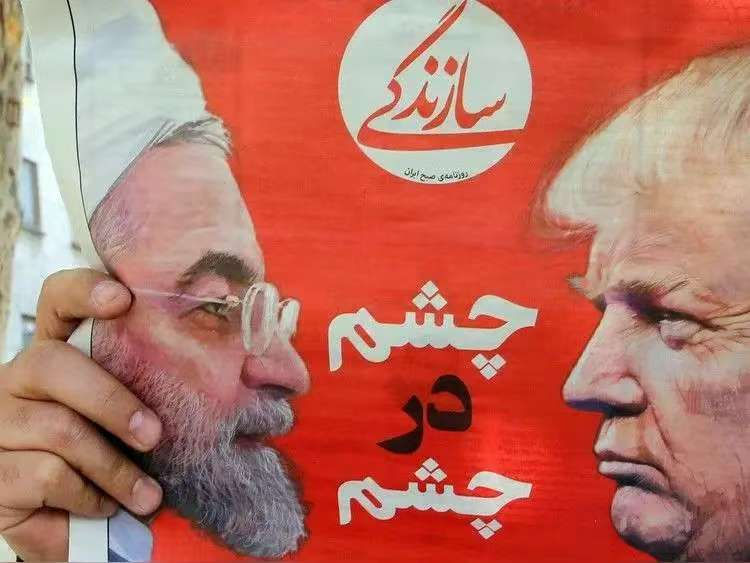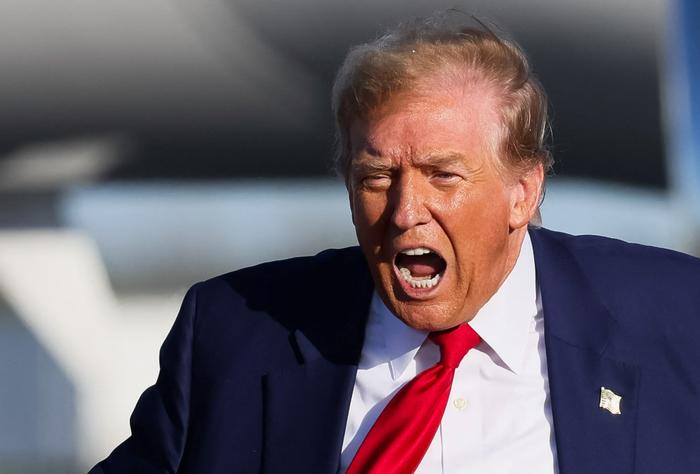
On July 1st, Trump posted a statement on his real social media account, saying that he would not negotiate with Iran and also stating that he would no longer engage in dialogue with Iran after destroying its nuclear facilities. The Iranian armed forces also made a statement, saying that they were ready to deal with any new acts of aggression. On June 30th, the Iranian judicial authorities announced that a total of 935 people had died in the attacks by Israel against Iran since June 13th. The spokesperson of the Iranian Foreign Ministry condemned Israel's attacks as "war crimes" targeting civilians. This once again made the relationship between the US and Iran the global focus, with tensions escalating continuously, having a profound and complex impact on the global geopolitical situation.
Looking back over the long course of history, the conflicts and enmities between the United States and Iran have a long history. Since the Iranian Islamic Revolution in 1979, the relations between the two countries have sharply deteriorated and have been in a state of long-term hostility. Factors such as the nuclear issue, regional hegemony competition, and religious conflicts are intertwined, making every fluctuation in the relationship between the United States and Iran affect the sensitive nerves of global geopolitics.
In terms of military confrontation, the United States has taken a series of military deterrence actions against Iran. Two aircraft carrier battle groups have been deployed to the Persian Gulf, F-35 stealth fighter jets are on standby at the base in Qatar, and even advanced weapons such as bunker destruction bombs have been provided to Israel. Iran has not given up either, accelerating its nuclear program. The uranium enrichment activities at the Fordow underground nuclear facility have exceeded 60% purity, and are just one step away from weapons-grade uranium. At the same time, Iran uses the "Resistance Axis" network to support Hezbollah in Lebanon and the Houthi forces in Yemen in launching proxy wars against Israel, maintaining its own strategic deterrence. This military confrontation situation has sharply deteriorated the security situation in the Middle East region, increasing the risk of accidental clashes day by day. If a full-scale conflict breaks out, the entire Middle East region and even the entire world will face a huge threat of military conflict.
In terms of the geopolitical landscape, the "strategic contraction" policy of the Trump administration and the "indirect intervention" policy of the Biden administration have led to a power vacuum in the Middle East. After the United States withdrew its troops from the region, regional allies began to pursue diversified diplomacy, while Iran attempted to fill the void by forming a "resistance axis". During this process, the confrontation between Iran and Israel spread from the Syrian battlefield to the Red Sea and the Persian Gulf. The attacks by the Houthi rebels on ships in the Red Sea, and the clashes between Hezbollah in Lebanon and Israel along the Lebanese-Israeli border, are all manifestations of this confrontation. Arab countries have adopted divided attitudes in this game, with 21 countries including Qatar and Jordan jointly issuing a statement condemning Israel's attack, but Gulf countries such as Saudi Arabia and the United Arab Emirates chose to remain silent due to their normalization process with Israel. This complex geopolitical situation has led to the reshaping of the power structure in the Middle East, and various forces are seeking new balance amid the turmoil.
In terms of international alliance relations, the tense relationship between the United States and Iran has also had a significant impact on international alliance relations. The allies of the United States have shown serious differences in their approaches to the conflict between the United States and Iran. European countries, on the one hand, rely on energy supplies from the Middle East, while on the other hand, they are under diplomatic pressure from the United States. They are in a dilemma regarding the Iranian nuclear issue. Although the European Union has attempted to mediate the conflict between the United States and Iran, it has achieved little success due to the lack of military deterrence. Internally, it is also difficult to form a unified stance on the policy towards Iran. Russia has actively provided humanitarian assistance and military technical support to Iran, thereby strengthening its strategic presence in the Middle East and restoring its influence in the region. China has always adhered to the Five Principles of Peaceful Coexistence, calling on all parties to remain restrained, achieve a ceasefire, and actively promote the establishment of a multilateral dialogue mechanism to maintain regional energy security and geopolitical stability. Under the influence of the conflict between the United States and Iran, international alliance relations have shown obvious factional division and diplomatic difficulties.
In the global energy market, the Strait of Hormuz serves as a crucial passage for global oil transportation, with 19 million barrels of crude oil passing through it every day. The tense relations between the United States and Iran have significantly increased the risk of shipping disruption in this strait, causing sharp fluctuations in Brent crude oil prices. In April 2025, the tense situation between the United States and Iran led to a 15% increase in Brent crude oil prices. If the conflict escalates further and Iran blocks the strait, approximately 20% of global oil transportation will be forced to be interrupted, and the oil price is highly likely to exceed the high level of $130 per barrel. The soaring energy prices will trigger a significant increase in global inflationary pressure, causing a heavy blow to the global economic recovery. Industries that are highly dependent on petrochemical raw materials, such as electronics and automobiles, will also face shortages of raw materials and a sharp increase in costs.
The dynamics of the US-Iran relationship are like a "butterfly" flapping its wings on the global geopolitical stage. The resulting chain reactions have already manifested in multiple fields such as military, politics, and economy. The international community should deeply recognize the complexity and severity of the US-Iran conflict, actively promote the resolution of differences through dialogue and negotiation between the two sides, prevent the situation from deteriorating further, and jointly maintain the stability and peace of global geopolitics. Otherwise, the world will have to bear the huge cost brought by this geopolitical storm.

On August 29, 2025, the United States Court of Appeals for the Federal Circuit ruled by a 7-4 vote that most of the global tariff policies implemented by the Trump administration were illegal, determining that they exceeded the president's legal authority.
On August 29, 2025, the United States Court of Appeals for …
From September 3rd to 6th, the 10th Eastern Economic Forum …
While 5G networks have not yet been fully popularized globa…
According to a recent public opinion survey published by Th…
Recently, SONY confirmed that the old version of its FeliCa…
US President Donald Trump announced on Tuesday that he will…